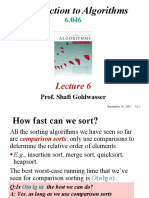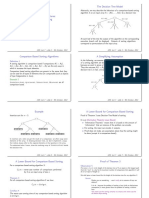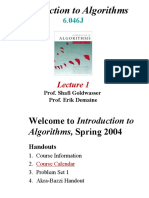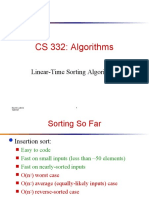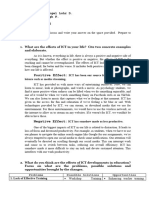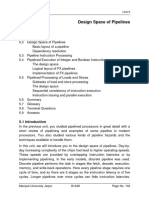0% found this document useful (0 votes)
4 views28 pagesLecture Note MA252 Jan 09
The lecture discusses the design and analysis of algorithms, emphasizing the importance of producing correct and efficient algorithms. It highlights the need for theoretical analysis to predict software performance and choose among different solutions. The document also explores sorting algorithms, their efficiency, and establishes a lower bound of Ω(n log n) for comparison-based sorting algorithms using decision trees.
Uploaded by
newgudupriyanka12Copyright
© © All Rights Reserved
We take content rights seriously. If you suspect this is your content, claim it here.
Available Formats
Download as PDF, TXT or read online on Scribd
0% found this document useful (0 votes)
4 views28 pagesLecture Note MA252 Jan 09
The lecture discusses the design and analysis of algorithms, emphasizing the importance of producing correct and efficient algorithms. It highlights the need for theoretical analysis to predict software performance and choose among different solutions. The document also explores sorting algorithms, their efficiency, and establishes a lower bound of Ω(n log n) for comparison-based sorting algorithms using decision trees.
Uploaded by
newgudupriyanka12Copyright
© © All Rights Reserved
We take content rights seriously. If you suspect this is your content, claim it here.
Available Formats
Download as PDF, TXT or read online on Scribd
/ 28


